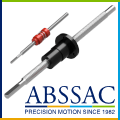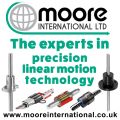
Posted to News on 27th Jun 2024, 13:15
Brushless DC Motors Optimise Performance for Medical Ventilators
Matthieu Bouat, Application Engineer at Portescap, explores why brushless DC (BLDC) miniature motors are the correct selection for a range of ventilator designs.

In the era of modern medicine, ventilators have significantly enhanced patient survival rates. Providing essential airflow when natural breathing is insufficient to sustain life, these devices support people undergoing surgery, tackling lung issues, suffering pulmonary ailments or facing otherwise imminent failure of bodily functions. Correctly specifying the miniature motors that power mechanical ventilators is essential for reliable operation, optimal performance and successful procedures.
There are a variety of medical ventilators on the market, and they are differentiated by the drive mechanism that generates the airflow. Compressor-based ventilators take several forms. Air or oxygen can be directly supplied from a compressor via lines or tanks, with bellows, vents or regulation valves managing delivery to the patient. Other designs feature pistons driven by electric motors, which compress air without the need for external hospital supply lines or compressors.
Turbine advantages
Increasingly popular with medical device manufacturers, turbine-driven ventilators utilise a high-speed turbine to produce pressurised airflow. The widespread adoption of this design is due to a few key advantages. First, pneumatic performance either equals or exceeds that of compressor-based ventilators used in intensive care units (ICUs).
Second, turbine-based ventilators are more efficiently designed, with compact packaging of mechanicals and a reduced footprint enabling batteries to be downsised and power demands reduced. Finally, the smaller size as well as independent, autonomous pressure and flow control also enable portability for transporting patients and use in multiple care settings.
An example of a turbine-based ventilator common in operating rooms is an anesthesia ventilator that delivers gases to keep patients under sedation during surgical procedures. In these devices, air is recycled in a closed loop system to prevent the release of chlorofluorocarbon (CFC) gases that would otherwise affect surgeons and medical staff or harm the environment.
Anesthesia ventilators will undergo hundreds of sterilization cycles, with the machine subjected to 100% humidity, 135degC temperatures, and pressures ranging between 80 mbar and 2.5 bar. Often, internal components will operate in 100% oxygen environments or be in direct contact with CFCs, which are a solvent for some materials like plastics. Therefore, correct parts specification is important.
Powering turbine-driven ventilators
BLDC miniature motor technology is optimal for powering turbine-driven ventilators. BLDC motors are high performance, reaching speeds up to 60,000 rotations per minute (rpm) while delivering exceptional torque and efficiency - all excellent characteristics for use with turbines. Furthermore, the slotless design ensures low inertia for rapid step response to precisely meet the dynamic airflow needs of patients, promoting comfort and acceptance. Long-term reliability over more than 15,000 hours of operation is possible with electronic commutation and durable ball bearings. The low noise characteristics of these motors are also highly beneficial in quiet medical environments.
Portescap offers a complete range of 16 mm to 22 mm Ultra EC BLDC motors to meet varied power requirements for turbine-driven ventilators. Consequently, support is available for devices used in ICU, transport, home care and neonatal applications. The longevity of its motors will often set or exceed the overall service life of the ventilator.
Meeting unique requirements
Despite the additional complexity of anesthesia ventilators, specialised BLDC motors are an ideal selection for this application too.
As well as requiring similar motor characteristics to turbine-driven ventilators, those used in anesthesia also need motors that can reliably withstand harsh environmental conditions. For example, during normal operation, the blower unit containing the motor can encounter pathogens, so ventilators undergo regular sterilisation cycles with an autoclave or hydrogen peroxide. Furthermore, long term operation in a high oxygen environment can oxidise lubricant in the ball bearings and cause failure, a phenomenon that can be accelerated by high operating temperatures.
A proven solution for these application requirements is the Portescap 22ECA60 slotless BLDC motor. Able to withstand more than 200 autoclave cycles, this motor is highly reliable even when regularly sterilised. To prevent oxidisation of ball bearing lubricant, the motor has low iron losses even at speeds up to 60,000 rpm, which reduces heat generation. Additional protection is provided by an integrated thermistor, which allows temperatures to be effectively monitored and controlled.
Breathe easy with a miniature motor expert
For designers creating new ventilators, there are a wide variety of application concerns and available motor options. Correct selection of motors and ball bearings is not only critical for device performance, but for patient comfort and successful procedures too.
Portescap offers decades of experience providing optimal motor technologies to meet the requirements of new ventilators, and its engineers are adept at improving motor integration, turbine assembly and overall performance. Consequently, medical device manufacturers have access to a partner that helps designers, medical professionals and patients breathe a little easier.














